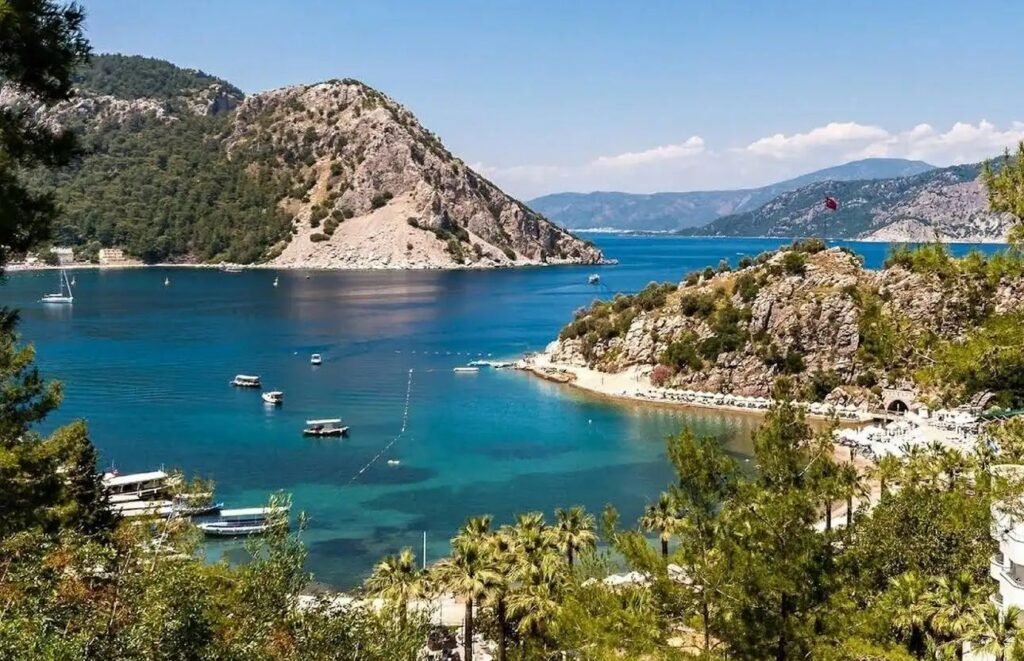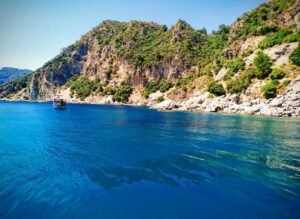Description
Wildlife Observation in Marmaris National Park – Marmaris, Muğla Province, Turkey
Nestled along the stunning turquoise coastline of southwestern Turkey, Marmaris is best known for its crystal-clear waters, vibrant nightlife, and charming marina. However, just a short drive away from the bustle of the city lies one of the region’s best-kept secrets: Marmaris National Park. This sprawling natural sanctuary offers an incredible opportunity for wildlife observation, making it a must-visit destination for nature lovers, photographers, hikers, and anyone eager to reconnect with the natural world.
A Hidden Gem of Biodiversity
Marmaris National Park, located within Muğla Province, spans approximately 29,000 hectares and is a rich ecosystem comprising dense pine forests, mountainous terrain, coastal wetlands, and rocky cliffs. Officially declared a national park in 1996, this protected area was established to preserve the region’s unique flora and fauna.
What makes Marmaris National Park particularly special is its biodiversity. It forms part of the Mediterranean biome, known for its high number of endemic plant species and varied wildlife. The park is a haven for both casual observers and dedicated wildlife enthusiasts.
Flora: A Forest Symphony
The vegetation in Marmaris National Park is lush and varied, predominantly made up of Calabrian pine (Pinus brutia), an evergreen conifer native to the eastern Mediterranean. Mixed within are sweet-smelling maquis shrubs, junipers, oaks, and olive trees, providing food and shelter for a wide variety of animals.
In spring and early summer, the park blooms with colorful wildflowers, including orchids, cyclamen, and rockroses, attracting countless insects and pollinators. For plant lovers, the park is a living botanical garden.
Fauna: Creatures Great and Small
The real magic of Marmaris National Park lies in its wildlife. The park is home to over 200 species of vertebrates, including mammals, birds, reptiles, and amphibians. Some of the species found here are endemic, while others are endangered, making the park a critical conservation area.
Mammals to Watch For:
- Wild Boar: These elusive creatures are most active at dusk and dawn. Observers may catch a glimpse of them foraging in the undergrowth.
- Red Fox: Agile and cunning, foxes are common throughout the park.
- Eurasian Badger, Martens, and Hedgehogs also inhabit the forests, though they are shy and mostly nocturnal.
Perhaps the most charismatic resident is the Caracal (Caracal caracal), a rare and protected wild cat known for its tufted ears and stealthy nature. Though sightings are rare, signs such as paw prints or scratch marks on trees hint at its presence.
Avian Wonders:
Birdwatchers will be thrilled by the avian diversity in the park. Marmaris National Park is a stopover point for migratory birds, as well as home to many resident species. Highlights include:
- Bonelli’s Eagle
- Short-toed Snake Eagle
- Eurasian Hoopoe
- Bee-eaters, with their dazzling colors
- Woodpeckers, Owls, and various Warblers
Wetland areas within the park also attract herons, egrets, and sometimes flamingos, depending on the season.
Reptiles and Amphibians:
Turkey’s warm Mediterranean climate is ideal for reptiles. In Marmaris National Park, you might encounter:
- Levantine Viper (be cautious!)
- Lizards, including the Starred Agama
- Tortoises, especially the Spur-thighed Tortoise
- Frogs and toads that fill the air with their croaks during wetter months
Best Times for Wildlife Observation
The best time to visit Marmaris National Park for wildlife observation is spring (April–June) and autumn (September–November). During these seasons, temperatures are pleasant, and animal activity is at its peak.
Early morning and late afternoon are optimal for spotting mammals and birds, while midday offers the best chance to see sun-loving reptiles.
Tips for a Successful Wildlife Experience
- Bring Binoculars and a Camera: Wildlife can be elusive. A good pair of binoculars and a zoom lens can help you enjoy the park without disturbing its inhabitants.
- Wear Earth-Toned Clothing: To blend in with your surroundings and avoid startling animals.
- Stay Quiet and Patient: The forest rewards stillness. Move slowly, take your time, and listen closely.
- Follow Designated Trails: These help protect sensitive habitats and increase your chances of encountering wildlife.
- Respect the Environment: Avoid feeding animals, littering, or leaving the marked paths.
Access and Visitor Facilities
Marmaris National Park is easily accessible by car or local tour services from the town center. Entry is generally free or requires a minimal fee, and there are picnic areas, walking trails, and viewpoints scattered throughout.
Popular trails like the Çubucak Forest Camp and Kumlubük Bay Trail offer fantastic hiking routes and scenic lookouts perfect for wildlife observation and nature photography.
Ecotourism and Conservation
The park plays a vital role in local ecotourism, offering sustainable tourism opportunities that benefit both visitors and local communities. By visiting Marmaris National Park and supporting local guides and services, tourists contribute to conservation efforts and help protect this precious natural area.
Organizations and universities regularly conduct ecological research in the park, and several initiatives promote awareness about endangered species and habitat preservation.
Conclusion
Marmaris National Park is more than just a green escape—it's a living, breathing ecosystem teeming with life. Whether you're quietly watching birds from a forest path, tracking footprints in the underbrush, or simply soaking in the beauty of an untouched landscape, the park offers a profound connection with the wild heart of Turkey.
For those visiting Marmaris, a trip to the national park offers a rare chance to see nature in its most authentic form—untamed, diverse, and awe-inspiring. Bring your curiosity, your camera, and your sense of adventure.
Location
-
Sarıana, Mustafa Münir Elgin Blv., 48700 Marmaris/Muğla









